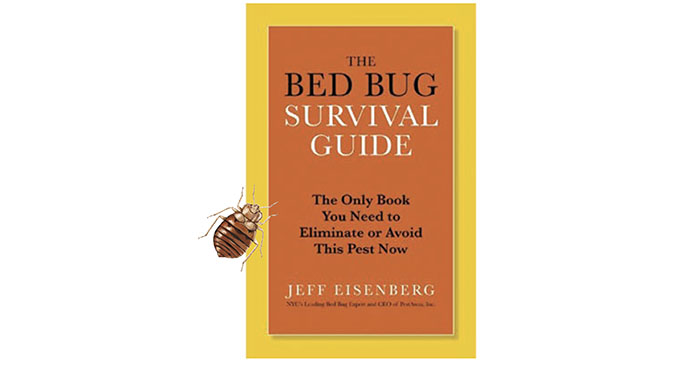If you find an insect, how do you know it’s a bedbug?
People get bites for months and never see them, because they’re very small. Bedbugs go through five stages before they become adults, and in the first three or four stages you will not see them with the naked eye. Now, on top of that, even the ones you can see, they spend 99 percent of their time in cracks and crevices. They only come out for three to five minutes at a time to feed on you every seven to 14 days. And they come out, usually, between 2 and 5 o’clock in the morning. So people are literally going crazy waking themselves up each night every 20 minutes, trying to see if they can spot one in the act.
How widespread is the problem?
It’s clearly international. American cities that had no reported problems, or almost no problem, even four or five years ago, like Philadelphia, today it’s gangbusters. People thought it was just a city problem, an urban situation, but it’s so not true. The suburbs are probably the fastest-growing population of bedbug problems today, more than even the cities.
Why is the epidemic escalating?
For nine years when I was ringing the alarm bells, saying, “We’ve got to do something, this problem is real,” nobody really took it seriously. People would come in and I would identify insects, their bites and determine it was bedbugs. But people would say, “I don’t have bedbugs. I’m clean. I have a housekeeper. I live in the suburbs. I went to Harvard. I’m not a foreigner. I don’t travel.” These self-made myths. Bedbugs are not a socioeconomic problem. So I would identify them in January and then nine months later, they would come back to me and say, “I think you’re right. I think I really do have bedbugs. What does it mean now?” Well, it means that we’ll take care of you, but you probably gave it to a couple hundred of your friends, neighbors, co-workers and people you travel with.
What can people do to prevent bedbugs before they appear?
The first thing people should do is encase their mattress, box spring and pillows with bedbug certified mattress encasements. If you don’t cover your mattress and box spring it can allow a bedbug infestation to fester for a long period of time without being detected. The only two manufacturers of effective encasements are Mattress Safe and Protect-A-Bed.
Does it help to keep your home super clean?
Very little. Bedbugs only feed on blood. That’s all they want. So cleanliness has a very slight bearing on whether you’re going to get a problem or not. In other words, you could vacuum all the time, but the problem is you need to throw your vacuum bag out each time you vacuum. Otherwise, if you do have bedbugs, they’re going to crawl back out of the vacuum.
What do you do when you’re traveling?
In a hotel or any time you’ve been on a plane or a train, it’s a little inconvenient, but try to not to put your suitcase on the bed. When you come back from a trip, you don’t want to be bringing your suitcase past the front door. You want to empty out your suitcase and all the clothing should be bagged up and get washed. And then your suitcase should be bagged up. The front door is really where you want to stop it from entering.
What about at work?
The workplace is the fastest-growing market of bedbugs. We do many offices which are struggling with bedbugs every day. People are bringing them into the workplace. And the way we’ve been able to get these offices to contain the incidents is by educating them what to look for at home, and what not to do. People should not be routinely spraying stuff in their apartments for bedbugs, because that, more likely, will spread it around if they’re there. It’s like you’re sending tear gas into their areas, and that’s just going to get them spreading all over the apartment, and into other apartments.
If you use a professional how much can you expect to pay?
It depends how widespread the problem is. The house or apartment are variables, but you look to pay at least four or five hundred dollars per room. If you’re spending less than that, you’re probably not getting the right job. Because it’s not something you can skimp on quality. Good companies will charge you because there’s a lot of training and education, and the right materials that go into it to get the job done right.
Can you get rid of them or will you have endless problems?
When it comes to roaches and mice, you can try to go for control. When it comes to bedbugs you have to go for elimination. It takes one pregnant female to start the whole problem over. But 100 percent is our aim, our goal, and what we do every day is we eliminate them. Boom. Done.
Do you use dangerous chemicals?
No, actually, we don’t. Our approach is we use a lot of heat. Not thermal, but we use a lot of heat, which is totally green. We can get rid of bedbugs in a matter of a couple of days. People sometimes say, “I don’t care. Use the really nuclear stuff.” But it happens to be that our green program is the most effective way. Chemicals very often make it worse.
Have you ever gotten bedbugs yourself since you are continually exposed to them?
Actually, I haven’t. I probably have more exposure to bugs than anybody. I’ve got people coming into my office every day, I’m out in the field, and I’ve never gotten them, because I take the right steps and measures. These are proven techniques that work. I’m living proof of it!
Author: Andrea Sachs, time.com















